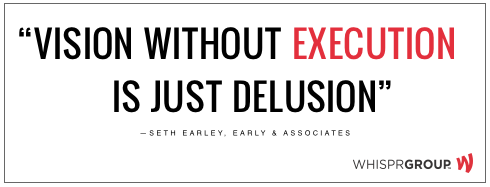On Friday, which was my 34th birthday, I was trying to write a post called “Leadership Is Dead.” Admittedly it was a major click-bait headline in a lot of respects, and I was having trouble writing it. The trouble came from two places: (a) I was honestly kind of depressed at work, because birthdays can be a bit depressing and (b) I really didn’t have enough to say to make it work. My idea was essentially this: the way people talk about leadership in the modern business environment isn’t really leadership; instead, it’s “mostly-nice people who do the politics better than others.” In short, when we keep saying “He/she is a great leader,” we actually mean “He/she is politically savvy at this job,” because, in honesty, you get things done by being good at the politics, and when things get done, people call you “a great leader.” See? I just laid out that thesis in 2-3 lines of text. I probably couldn’t have written a whole post on it. I’m still somewhat depressed, but that’s for another post.
I found this article by Greg Satell (of Digital Tonto) on Harvard Business Review, and it makes a number of good points about leadership and organizational alignment in the modern age. Namely, there’s this:
Asch’s research helps explain why it is so hard for enterprises to adapt to new challenges. It may be possible to create alignment among the leadership team, but that consensus will break down once the individual members return to their working groups. There, they will find that they are confronted with local majorities opposed to the global leadership view and, in time, even leaders will conform.
If you’re unfamiliar with Asch’s research:
So think about this chain of events:
- Most managers tend to think at the macro level, because that’s how classic management training works — and stake/shareholders tend to want plans and vision above all else.
- Actual decisions and movement take place at the micro level.
- Most managers aren’t very good, and most people construe themselves as very busy, so how is someone going to downshift from the macro to the micro?
If you look at the above in the most negative way possible, here’s what you create: a business world in which vision is set, but execution is nearly impossible. Look at what Satell wrote above — “It may be possible to create alignment among the leadership team, but that consensus will break down once the individual members return to their working groups.” I’ve seen that literally every place I’ve ever worked. (Ironically, that’s why one aspect of “being a better leader” is so simple.)
Phrased another way in terms of vision and execution are hard to align, consider this stat from one industry — but a major industry at that:
https://twitter.com/CMO_com/status/531564642523303936
There are solutions to this problem, sure, but they aren’t easy. Oftentimes you need to think about your hiring models first, because too many Type-A overachievers — which is what a lot of companies in numerous verticals look for — ultimately needs to too many middle managers who want to show themselves as more. That blows up in your face.
Honestly, I think the simplest solution — albeit also the most challenging one — is for people to simply re-construe their workdays. This can be around themes, or around the idea of mise-en-place, or whatever works for you. The problem with the workday, broadly-speaking, is that we spend too much time in meetings, which backloads the real work. Meetings are talking about work; they’re not actually doing work. That overwhelms people, and then, when they have time not in meetings, they spend it trying to catch up on work and e-mails.
You know what the problem is there?
When you’re running from meeting to meeting to e-mail to e-mail, you’re losing that personal connection. As a foot soldier, maybe that’s less important. As a manager, it’s tremendously important. You need to know what your people are doing, but also show that you’re there for your people.
The only way “vision” and “execution” can really align is if managers get adept at managing down, as opposed to managing up, but that’s going to be a big challenge for most people unless they start thinking about their life, and their workday, differently.
